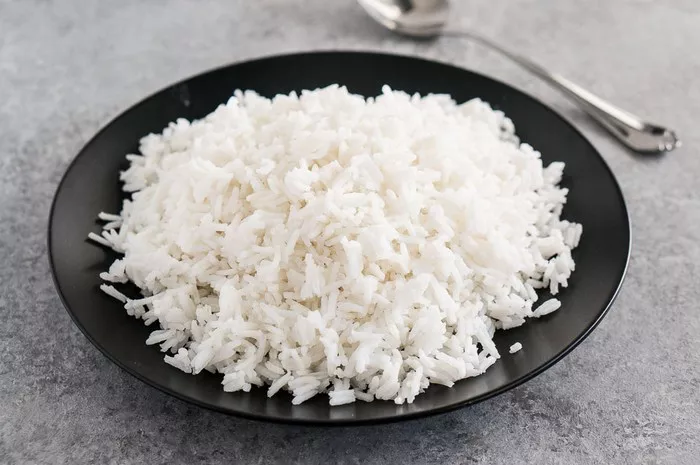Steamed rice is a staple in many diets around the world, but for individuals managing diabetes, its impact on blood sugar levels can be a cause for concern. Understanding the relationship between rice and diabetes is crucial to making informed dietary choices that support blood sugar control.
SEE ALSO: Is Purple Sweet Potato Beneficial for Diabetics?
1.Is Steamed Rice Good for Diabetics?
The answer to this question is nuanced. While steamed rice, especially white rice, is not inherently harmful, it has a high glycemic index (GI), which means it can cause rapid spikes in blood sugar levels. For diabetics, maintaining stable blood sugar is essential, so consuming high-GI foods like white rice can pose challenges. However, with careful management, including portion control and pairing rice with other low-GI foods, it is possible for diabetics to include steamed rice in their diet without significant adverse effects.
2. Explanation of Glycemic Index:
The glycemic index (GI) is a ranking system that measures how quickly a carbohydrate-containing food raises blood sugar levels after consumption. Foods are ranked on a scale from 0 to 100, with higher numbers indicating foods that cause a more rapid increase in blood sugar.
White Rice: Typically has a GI ranging between 70 and 90, depending on the type and preparation. This makes it a high-GI food, meaning it can lead to quick spikes in blood sugar.
Brown Rice: Generally has a lower GI, around 50 to 65, because it contains more fiber, which slows down the absorption of sugar into the bloodstream.
Long Grain vs. Short Grain: Long grain rice, such as Basmati, tends to have a lower GI compared to short grain rice, like sticky or sushi rice, which is more likely to cause a rapid increase in blood sugar.
3. Tips for Diabetic-Friendly Rice Consumption:
If you’re diabetic and want to include steamed rice in your diet, consider the following tips to minimize its impact on your blood sugar levels:
Portion Control: One of the most important aspects of consuming rice as a diabetic is controlling portion sizes. A typical serving of rice can range from 1/4 to 1/2 cup, depending on your overall meal composition. Smaller portions help reduce the total glycemic load, which is the combined effect of both the GI and the quantity of carbohydrates consumed.
Pairing with High-Fiber Foods: Combining rice with high-fiber foods such as vegetables, beans, or leafy greens can slow the absorption of sugars into the bloodstream. Adding lean proteins like chicken, fish, or tofu can also help moderate blood sugar spikes by slowing down the digestive process.
Choosing Low-GI Rice Varieties: Opting for rice varieties with a lower GI, such as brown rice, wild rice, or Basmati rice, can help in managing blood sugar levels better than consuming high-GI white rice. These options have more fiber and nutrients, which not only contribute to better blood sugar control but also provide additional health benefits.
Timing of Consumption: The timing of when you eat rice can also affect blood sugar levels. Consuming rice earlier in the day, when you are more active, can help your body utilize the glucose more effectively. Additionally, incorporating rice as part of a balanced meal rather than on its own can help in managing blood sugar levels more effectively.
4. Additional Considerations:
It’s important to remember that individual factors play a significant role in how your body responds to rice. These factors include:
Insulin Sensitivity: Your body’s ability to respond to insulin affects how carbohydrates like rice are metabolized. Individuals with higher insulin sensitivity may tolerate rice better than those with insulin resistance.
Medication: Some diabetes medications help manage blood sugar spikes, which might allow for a more flexible diet. However, this does not eliminate the need for careful food choices.
Overall Dietary Choices: The context of your entire diet matters. If your diet is rich in high-fiber, low-GI foods and you maintain an active lifestyle, occasional consumption of steamed rice may be less impactful on your blood sugar levels.
Given the complexity of managing diabetes, it’s advisable to consult with a healthcare professional or a registered dietitian. They can provide personalized advice based on your specific needs, helping you create a diet plan that supports your health goals while allowing for the inclusion of foods like steamed rice.
5. Alternative Grain Options:
For diabetics looking for even lower-GI grain options, there are several alternatives to steamed rice:
Quinoa: Quinoa has a low to medium GI and is high in protein and fiber, making it an excellent alternative to rice for blood sugar management.
Barley: With a GI of around 25 to 30, barley is another low-GI grain that can help stabilize blood sugar levels.
Oats: Oats, especially steel-cut or rolled oats, have a low GI and are rich in soluble fiber, which can slow the absorption of sugar into the bloodstream.
Conclusion
While steamed rice can be part of a diabetic’s diet, it should be consumed with caution, considering portion sizes, the type of rice, and how it is paired with other foods. Exploring alternative grains can also provide variety and better blood sugar control. As always, personalized dietary advice from a healthcare professional is recommended to ensure optimal management of diabetes.
Related Topics:



























